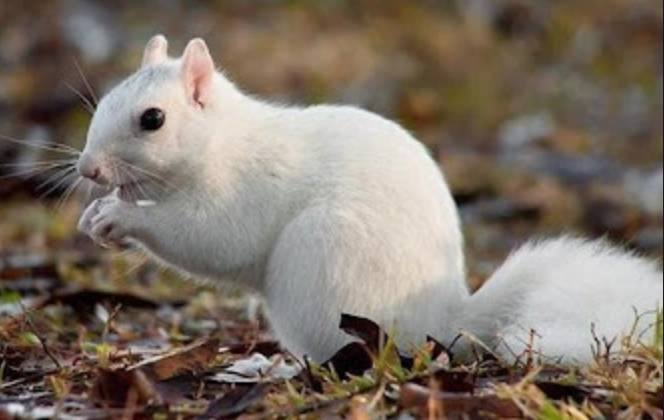First dead squirrels, now white squirrels? That’s just nuts!
A tree squirrel with completely white fur was spotted burying nuts in the front lawn of a home on Normand Street Monday.

Video by Ryan Lessard
MANCHESTER, NH — A tree squirrel with completely white fur was spotted burying nuts in the front lawn of a home on Normand Street Monday.
A reporter was lucky enough to spot the snow-white rodent as he drove by the home in the quiet east-side neighborhood, and stopped to record the video.
Dave Anderson with the New Hampshire Forest Society identified the genetic mutation as leucism, which differs from albinism because the squirrel in the video has dark eyes. Albino squirrels have red eyes.
“I would say it’s not really common. It is rare,” Anderson said.
Season of the dead squirrels
Anderson’s only personally spotted a black squirrel and a whitish squirrel in New Hampshire before. But since the state is currently experiencing a widely-reported boom in squirrel populations, it’s possible the larger numbers have increased the probability of such a sighting.
The Farmer’s Almanac reports this year’s abundance of dead squirrel sightings on New Hampshire roadways is related to last year’s bumper crop of acorns, which led to a baby squirrel boom. Now, they’re all out there competing for food.
Anderson could not say what percentage of the gray squirrel population the leucistic squirrels make up.
But a colony of leucistic squirrels with the same white fur was reported to have existed in Andover, Mass. in 2016.
Anderson said now that the squirrels are scrambling for limited food, they may be travelling longer distances in search of it.
Gray squirrels (even when they have white or black fur) are “scatter hoarders,” Anderson said, which means they disperse their food stores and mark them with saliva so they can find it later. Red squirrels and chipmunks store their food in central caches.





